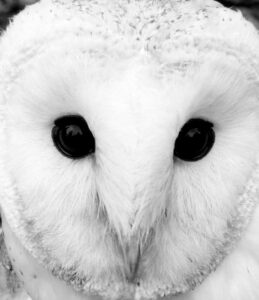 Click below to link to:
Click below to link to:
![]() Alexithymia
Alexithymia
![]() Emotional awareness
Emotional awareness
![]() Emotional expression
Emotional expression
![]() Emotional focussing
Emotional focussing
![]() Back to main page
Back to main page
![]() References
References
‘Corporate’ Model of Emotional Intelligence
The second definition of Emotional Intelligence, known as the “corporate version”, includes almost everything except IQ, such as conscientiousness, self-confidence, optimism, communication, leadership and initiative (Goleman, 1995). This approach, which is extremely popular in the business world, emerged following David Goleman’s 1995 book, aptly named “Emotional Intelligence: Why it can matter more than IQ”. Emotional Intelligence was catapulted into the headlines as an ability, which could lead to success at home, at school and in the workplace. Goleman’s book proposes ways individuals can become more effective and co-operative team members, as well as improving their technical skills and IQ for jobs of all levels. He hypothesizes that Emotional Intelligence can be learned and that it improves with age. Salovey and Mayer also believe that Emotional Intelligence develops with age, alongside which they suggest emotional knowledge can be enhanced and emotional skills can be learned. Goleman’s book claims that “…Emotional Intelligence can matter more than IQ…” He believes that skills, which are most critical to success, include self-awareness, empathy and sociability associated with an emotional kind of intelligence (Goleman, 1995). Regrettably, there was no known research to date that has managed to measure improved Emotional Intelligence scores, as determined by the Mayer, Salovey and Caruso Emotional Intelligence Test. However, in the Somerville study of 450 Massachusetts-raised boys, which took place over 40 years (Cherniss, 2000), IQ was shown to have little impact on success in later life. Childhood abilities, for instance being able to handle frustration, control emotions and get along with other people, were shown to be the most influential factors for later success, which broadly supports Goleman’s (1995) contentions.
 In 2002, Vitello-Cicciu conducted a study, which examined both Emotional Intelligence and leadership skills in nurse leaders. Eleven leaders scored highly in Emotional Intelligence and three scored low. Upon interview with these participants, 90% of the high scoring nurses said they read self-help books and 72% of them used meditation, as ways of managing their emotions. These nurse leaders also suggested that the use of strategies, which include not taking things personally, employing stress management techniques and expressing empathy for others, help to develop Emotional Intelligence. In comparison with the low scoring individuals, high scoring nurses appeared to have heightened emotional awareness of both themselves and others. The researcher identifies emotional awareness of self and others, as the underlying cornerstone of an individual’s ability to be emotionally intelligent. In other words, one’s ability to be aware of their own and others’ emotions, being sensitive to these emotions, evaluating why these emotions exist, understanding their impact on others and lastly being able to appropriately respond to them. Emotionally intelligent nurse leaders exemplified the ability to manage their own emotions, whilst simultaneously managing the emotional responses of their staff, patients and family. It is inferred that nurse leaders who lead with both their head and their heart, encourage optimal environments, which promote teamwork, collaboration and a high quality of nursing care, with desired outcomes.
In 2002, Vitello-Cicciu conducted a study, which examined both Emotional Intelligence and leadership skills in nurse leaders. Eleven leaders scored highly in Emotional Intelligence and three scored low. Upon interview with these participants, 90% of the high scoring nurses said they read self-help books and 72% of them used meditation, as ways of managing their emotions. These nurse leaders also suggested that the use of strategies, which include not taking things personally, employing stress management techniques and expressing empathy for others, help to develop Emotional Intelligence. In comparison with the low scoring individuals, high scoring nurses appeared to have heightened emotional awareness of both themselves and others. The researcher identifies emotional awareness of self and others, as the underlying cornerstone of an individual’s ability to be emotionally intelligent. In other words, one’s ability to be aware of their own and others’ emotions, being sensitive to these emotions, evaluating why these emotions exist, understanding their impact on others and lastly being able to appropriately respond to them. Emotionally intelligent nurse leaders exemplified the ability to manage their own emotions, whilst simultaneously managing the emotional responses of their staff, patients and family. It is inferred that nurse leaders who lead with both their head and their heart, encourage optimal environments, which promote teamwork, collaboration and a high quality of nursing care, with desired outcomes.
In short, Emotional Intelligence is based on a long history of research within a variety of areas, in particular, Social Psychology. This impressive body of research continues to grow and develop. It may veer more in the direction of Goleman’s ‘corporate’ approach, which focuses on personality traits and implies that emotionally intelligent individuals are ambitious, enthusiastic and committed to achieving their goals. Alternatively, it could veer more towards Salovey and Mayer’s ‘academic’ model (Hein, 2003). Which direction it takes, remains to be seen (Mayer & Salovey, 1993).